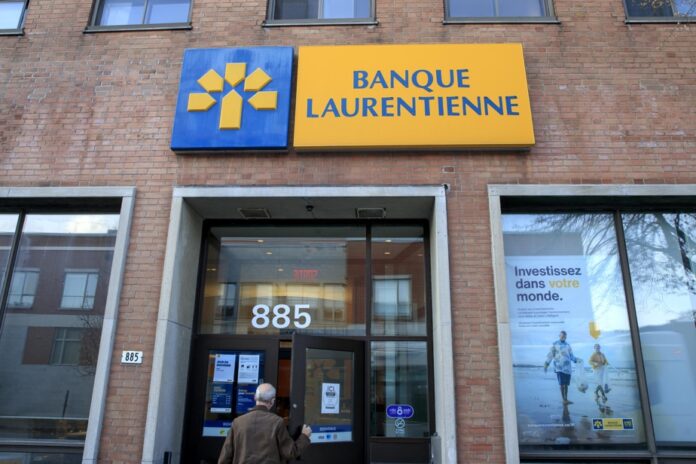The Laurentian Bank is reorganizing after unsuccessfully trying to find a buyer.
The bank’s management announced Thursday that it had completed its strategic review exercise and judges that the best path forward to maximize value for its shareholders is to accelerate the evolution of its strategic plan.
During the review process, the sale of the bank was evaluated. Laurentian has received purchase offers as part of this review, including at least one for the entire bank, according to our information.
However, the value of the proposals received would not have been considered advantageous for shareholders.
Still according to our information, interest was still demonstrated last week for the bank or one of its divisions. Suitors who previously left the process reportedly even decided to reconsider a transaction midstream this summer.
In June, Canada’s Office of the Superintendent of Financial Institutions increased for the third time in two years the level of reserves that large banks must hold to ensure adequate capitalization to absorb shocks, a decision reflecting growing vulnerabilities potential.
The more banks are required to maintain high reserves, the fewer resources they have at their disposal to make acquisitions.
Analyst Mike Rizvanovic, from the Keefe, Bruyette firm
Laurentian’s stock lost 11% of its value Thursday afternoon below $32 on the Toronto Stock Exchange.
The stock was worth $33 before it was announced in July that a review of strategic options was being conducted. The stock rose as high as $43 following the announcement before falling as the market considered the chances of a sale of the bank dwindling.
“While it is possible that a financial institution will attempt to purchase Laurentian again eventually, the likelihood of such an eventuality within 18 to 24 months is very low,” says Darko Mihelic, at RBC.
This expert now thinks that Laurentian may not be able to achieve some of its medium-term objectives, particularly that concerning its efficiency ratio. He doubts the bank will be able to generate sufficient revenue growth relative to its expenses. More aggressive measures (i.e. restructuring) may be necessary, he says.
The bank’s organizational structure has since been simplified. Two senior executives are leaving the organization: Karine Abgrall-Teslyk, who was responsible for personal banking, and Yves Denommé, who led the bank’s sector and operations teams.
Éric Provost, currently head of business services, adds responsibility for personal banking services to his responsibilities, while Sébastien Bélair becomes head of administrative services, now assuming responsibility for operations in addition to his current role as head of resources human.
In both cases, it is a transfer of responsibilities that belonged to managers in Toronto to executives in Montreal, which can be seen as good news for Quebec.
Likewise, the decision not to sell the bank ensures that Quebec retains a head office even if several managers still mainly exercise their functions in Toronto.
The bank intends to focus on sectors where it believes it can make gains and on its most profitable products.
This means focusing on activities where the bank can stand out, such as in the commercial sector with the financing of inventories and equipment, which is the engine of growth for the organization.
A review of the strategic plan will be presented in January during an investor day. In particular, they will want to know how management plans to produce results that will bring the stock back to at least its book value of $59 per share.
CEO Rania Llewellyn was not available to answer our questions Thursday.















